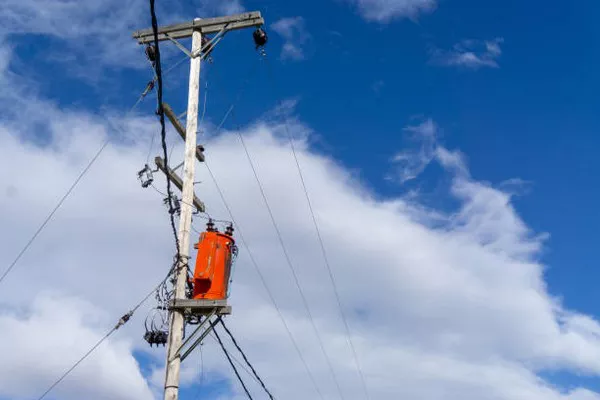Electrical transformers are fundamental components in power distribution systems, crucial for transmitting electricity from generation sources to end users. They operate on the principle of electromagnetic induction to convert voltages from one level to another, ensuring efficient power transmission and distribution across various applications. There are several types of electrical transformers, each designed for specific purposes and applications. This article explores the different types of transformers, their functions, and their applications.
1. Power Transformers
Definition and Function: Power transformers are primarily used in transmission networks to step-up (increase) or step-down (decrease) voltage levels. They are essential in transmitting electrical power over long distances from power plants to distribution networks.
Types of Power Transformers:
Step-Up Transformers: These transformers increase the voltage from the primary to the secondary winding. They are typically used at the generation side to elevate the voltage for long-distance transmission, reducing energy loss.
Step-Down Transformers: These decrease the voltage from the primary to the secondary winding and are used at the distribution side to lower the voltage for safe utilization by consumers.
Applications: Power transformers are found in substations, industrial plants, and power generation facilities. They play a crucial role in ensuring that electrical energy is efficiently transported from production sites to areas of consumption.
2. Distribution Transformers
Definition and Function: Distribution transformers are used to provide the final voltage transformation in the electrical power distribution system. They step down the voltage used in the distribution lines to the level used by the end user.
Types of Distribution Transformers:
Pole-Mounted Transformers: These are installed on utility poles and are used to supply power to residential areas.
Pad-Mounted Transformers: These are installed on concrete pads and are used in underground distribution networks, commonly found in residential, commercial, and industrial areas.
Applications: Distribution transformers are critical in urban and rural power distribution systems, ensuring that homes, businesses, and industries receive electricity at usable voltage levels.
3. Instrument Transformers
Definition and Function: Instrument transformers are used in conjunction with measuring instruments or protective devices to isolate, transform, and measure high voltages and currents.
Types of Instrument Transformers:
Current Transformers (CTs): These are used to measure high current levels by stepping down the current to a lower, manageable value for metering and protection.
Voltage Transformers (VTs) or Potential Transformers (PTs): These step down high voltage levels to lower values for metering and protection purposes.
Applications: Instrument transformers are essential in electrical substations and industrial plants for accurate measurement, monitoring, and protection of electrical systems.
4. Isolation Transformers
Definition and Function: Isolation transformers are designed to decouple two circuits, allowing AC power to be taken from one device and supplied to another without directly connecting the two circuits. This isolation is crucial for protecting sensitive equipment from electrical noise and potential surges.
Applications: Isolation transformers are widely used in medical equipment, data centers, and electronic devices to ensure safety and protect sensitive electronics from disturbances in the power supply.
5. Autotransformers
Definition and Function: Autotransformers have a single winding that acts as both the primary and secondary winding, with a portion of the winding common to both. They are used for applications where the voltage difference between the primary and secondary is relatively small.
Applications: Autotransformers are used in voltage regulation applications, motor starting, and in laboratory settings where variable voltage is required. They are also employed in power distribution for voltage correction and stabilization.
6. Three-Phase Transformers
Definition and Function: Three-phase transformers are used in three-phase power systems, which are common in industrial and large commercial power distribution. They consist of three single-phase transformers wound on a common core.
Applications: These transformers are widely used in industrial applications, power generation, and transmission where three-phase power is required, providing a balanced load and improving efficiency.
7. Single-Phase Transformers
Definition and Function: Single-phase transformers are used in single-phase power systems, typically found in residential and light commercial applications. They have a simpler design compared to three-phase transformers.
Applications: These are commonly used for residential lighting,heating, and powering household appliances.
8. Oil-Filled Transformers
Definition and Function: Oil-filled transformers use mineral oil for insulation and cooling. The oil acts as an insulating medium, preventing electrical breakdown, and also as a coolant, dissipating the heat generated during operation.
Applications: Oil-filled transformers are used in high-voltage applications such as power stations and substations due to their excellent cooling properties and ability to handle high power loads.
9. Dry-Type Transformers
Definition and Function: Dry-type transformers do not use liquid for cooling; instead, they rely on air or gas for cooling. These transformers use a solid insulation system, such as epoxy resin, for electrical insulation.
Applications: Dry-type transformers are ideal for indoor applications and locations where fire safety is a concern, such as commercial buildings, schools, and hospitals. They are also used in renewable energy applications like wind turbines and solar power systems.
10. Toroidal Transformers
Definition and Function: Toroidal transformers have a doughnut-shaped core, which makes them more efficient and compact compared to conventional transformers. They offer lower electromagnetic interference and improved efficiency.
Applications: These transformers are used in audio equipment, medical devices, and compact power supplies due to their low noise and high efficiency.
Conclusion
Electrical transformers are indispensable components in the modern power distribution network, each type tailored to specific requirements and applications. Power transformers ensure efficient long-distance power transmission, while distribution transformers make electricity usable for consumers. Instrument transformers provide precise measurements and protection, isolation transformers safeguard sensitive equipment, and autotransformers offer voltage regulation. Three-phase and single-phase transformers cater to different power system needs, oil-filled transformers excel in high-voltage applications, and dry-type transformers ensure safety in indoor settings. Finally, toroidal transformers provide compact, efficient solutions for specialized applications.
Understanding the various types of transformers and their specific applications helps in designing and maintaining efficient and reliable power systems, ensuring that electricity is safely and effectively delivered from generation points to end users. As technology advances, transformer designs continue to evolve, further enhancing the efficiency and reliability of electrical power systems worldwide.

